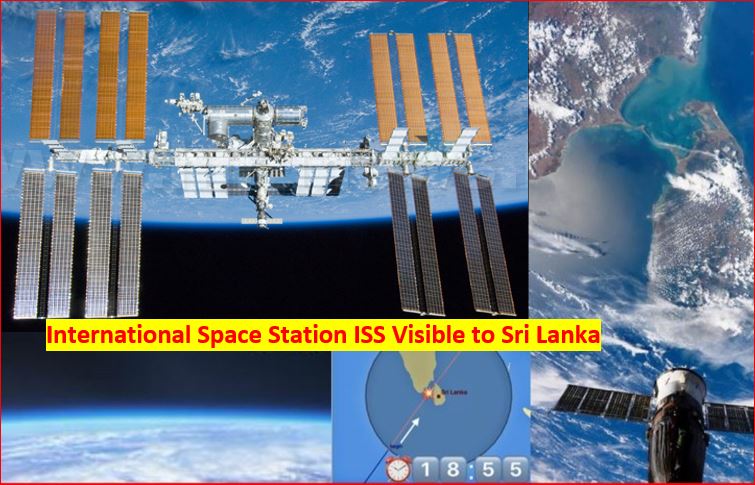International Space Station ISS visible to Sri Lanka today 7.10pm
Good News for Sky- Gazers and Space Lovers ! International Space Station ISS will be visible to the naked eye at 7.10pm to 7.16pm local time, above Sri Lanka today August 10. (If sky is clear).
Time: Tue Aug 10 7:10 PM, Visible: 6 min, Max Height: 56°, Appears: 10° above NNW, Disappears: 18° above SE
According to Space Station website, International Space Station, is the third brightest object in the sky and easy to spot if you know when to look up.
If sky is clear, visible to the naked eye, it looks like a fast-moving plane only much higher and traveling thousands of miles an hour faster.
The sighting opportunity will begin at 7.10 pm local time and will be visible for a maximum time period of 6 minutes before crossing back below the horizon. It appears North West direction 10° and will disappears 18° above South East.
ISS said that the Max Height (also known as elevation) will be 56°. It represents the height of the space station from the horizon in the night sky. The horizon is at zero degrees, and directly overhead is ninety degrees.
The location in the sky where the station will be visible first has been declared as 10° above North West and will leave the field of view 18° above South East. This value, like maximum height, also is measured in degrees from the horizon.
Watch the International Space Station pass overhead from several thousand worldwide locations. It is the third brightest object in the sky and easy to spot if you know when to look up.
Visible to the naked eye, it looks like a fast-moving plane only much higher and traveling thousands of miles an hour faster!
International Space Station will be visible to Sri Lanka from time to time. It will be visible several days during August month 2021.
Following are the dates and times the space station will be visible:
Why is the space station up there?
The space station is Earth’s only microgravity laboratory. This football field-sized platform hosts a plethora of science and technology experiments that are continuously being conducted by crew members, or are automated. Research aboard the orbiting laboratory holds benefits for life back on Earth, as well as for future space exploration. The space station serves as a testbed for technologies and allows us to study the impacts of long-term spaceflight to humans, supporting NASA’s mission to push human presence farther into space. Learn more about the research happening on the space station, and opportunities to conduct your science there.
How to identify the space station in the sky?
The space station looks like an airplane or a very bright star moving across the sky, except it doesn’t have flashing lights or change direction. It will also be moving considerably faster than a typical airplane (airplanes generally fly at about 600 miles (965 km) per hour; the space station flies at 17,500 miles (28,000 km) per hour).
Do I need a telescope to see the space station?
No, you can see the space station with your bare eyes, no equipment required.
How often can I expect to see the space station?
The space station is visible because it reflects the light of the Sun – the same reason we can see the Moon. However, unlike the Moon, the space station isn’t bright enough to see during the day. It can only be seen when it is dawn or dusk at your location. As such, it can range from one sighting opportunity a month to several a week, since it has to be both dark where you are, and the space station has to happen to be going overhead.
More details – ISS

